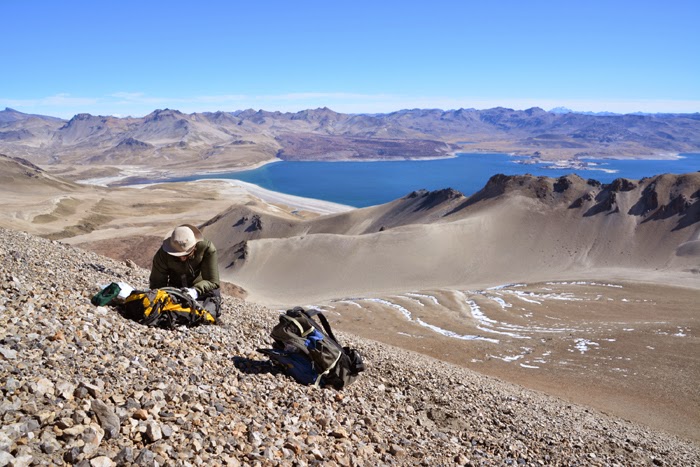
The Laguna del Maule Volcanic Field, Chile, includes a record of unusually large and recent concentration of silicic eruptions. Since 2007, the crust there has been inflating at an astonishing rate of 25 centimeters per year. This unique opportunity to investigate the dynamics of a large rhyolitic system while magma migration, reservoir growth, and crustal deformation are actively under way is stimulating a new international collaboration.
Explosive eruptions of large-volume rhyolitic magma systems are common in the geologic record and pose a major potential threat to society. Unlike other natural hazards, such as earthquakes and tsunamis, a large rhyolitic volcano may provide warning signs long before a caldera-forming eruption occurs. Yet, these signs—and what they imply about magma-crust dynamics—are not well known.
This is because we have learned how these systems form, grow, and erupt mainly from the study of ash-flow tuffs deposited tens to hundreds of thousands of years ago or more, or from the geophysical imaging of the unerupted portions of the reservoirs beneath the associated calderas.
Research findings thus far lead to the hypothesis that the silicic vents have tapped an extensive layer of crystal-poor, rhyolitic melt that began to form atop a magmatic mush zone that was established by about 20,000 years ago, with a renewed phase of rhyolite eruptions during the Holocene. Modeling of surface deformation, magnetotelluric data, and gravity changes suggest that magma is currently intruding at a depth of approx. 5 km. The next phase of this investigation seeks to enlarge the sets of geophysical and geochemical data and to use these observations in numerical models of system dynamics.
Reference:
“Dynamics of a large, restless, rhyolitic magma system at Laguna del Maule, southern Andes, Chile.” B.S. Singer et al., University of Wisconsin–Madison, Dept. of Geoscience, Madison, Wisconsin 53706, USA, Pages 4–10; DOI: 10.1130/GSATG216A.1.
Note : The above story is based on materials provided by Geological Society of America









